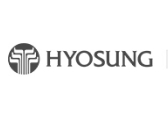ATM Security Compliance in 2025 What Every Business Needs to Know

As the ATM industry stands on the edge of a digital transformation, ATM Security Standards Compliance is taking center stage. The year 2025 marks a critical turning point for security across the industry. New encryption mandates—particularly TR-31 and TR-34—are redefining the rules for ATM operators. These standards aim to tackle the rising tide of cyber threats and ensure trust in cash-based transactions. But for ATM deployers, this evolution brings more than just technical requirements—it reshapes how security, efficiency, and compliance intersect in everyday operations.
Meeting the ATM Security Standards Compliance deadline is not optional. With enforcement coming from payment networks, regulators, and card brands alike, falling behind may result in disconnection from the networks, loss of processing support, or a reputational blow. So, what does this mean for your business, and how should you prepare?
The Heart of Compliance What TR-31 Really Means
At the core of the 2025 ATM security standards compliance is TR-31, a protocol that defines how cryptographic keys are packaged and secured. In plain terms, TR-31 ensures that sensitive key information is not only encrypted but also bound to metadata describing how, when, and by whom it can be used.
This format includes information such as key usage restrictions, origin identifiers, and integrity checks. Why is that important? Because it makes key management more robust, traceable, and immune to unauthorized use or duplication. For ATM deployers, it reduces the risk of fraud while strengthening audit compliance—two pillars of operational reliability.
TR-34: A New Era of Remote Key Loading
Alongside TR-31 comes TR-34, which revolutionizes how ATMs receive and manage their keys. Traditional methods required technicians to manually load encryption keys—often at the terminal. TR-34 replaces this process with secure, remote delivery through public key infrastructure (PKI).
Instead of risking exposure through human interaction, TR-34 uses digital certificates to authenticate both sender and receiver. This method provides verifiable proof of origin and guarantees the integrity of the key throughout the journey.
For ATM businesses, this shift means greater scalability, reduced servicing costs, and faster response times to key rotation or compromise events—all while meeting stringent regulatory expectations.
Why 2025 Is a Deadline You Can’t Ignore
While security standards have been evolving for years, 2025 ATM security standards compliance is the firm line in the sand. Networks and regulatory bodies are demanding action. Any ATM that does not support TR-31 and TR-34 by the deadline will face consequences ranging from shutdowns to being delisted from processing networks.
For Independent ATM Deployers (IADs) and financial institutions alike, this moment is about more than compliance—it’s about survival. Non-compliant machines may not just face regulatory pushback but could also alienate customers who expect modern security assurances.

Steps to Achieve ATM Security Standards Compliance
To meet these new requirements, operators must begin by evaluating their current systems and updating their infrastructures. Start with a full inventory of your ATM fleet, identifying which models and vendors support TR-31 and TR-34 out of the box or through firmware updates. Then, work with certified vendors to deploy any necessary software or hardware patches.
Key management systems must be modernized to handle encrypted key blocks and support remote loading processes. This often involves integration with Hardware Security Modules (HSMs), which offer secure key generation, injection, and storage. Additionally, staff training is critical—especially for those managing back-end systems or responding to incidents in the field.
If you’re wondering how to know whether your ATMs are already compliant, start by checking your device documentation or contact your service provider directly. They should be able to confirm TR-31/TR-34 compatibility or offer upgrade pathways.
The Role of PCI and Network Certification
While TR-31 and TR-34 are front-and-center, these encryption protocols don’t operate in isolation. They form part of a broader PCI PIN Security framework that includes device approval, tamper detection, and encryption key lifecycle controls.
Compliance with TR-31/TR-34 therefore contributes directly to your PCI audit readiness. If your ATMs fall short, it can affect your merchant status and expose you to fines or business interruptions. So even if you’ve passed audits in the past, the new standards require a fresh look at your full security posture.
Customer Trust Starts With Compliance
Let’s not overlook one of the biggest intangible benefits of being compliant: trust. In an era where cyberattacks dominate headlines, customers are increasingly wary of insecure systems. An ATM that is visibly modern, secure, and certified can inspire more confidence than you might expect.
Publicizing your commitment to the 2025 ATM security standards compliance can reinforce customer loyalty and differentiate your brand in a competitive market. Train your staff to answer questions about security protocols and share information on your website about your upgraded systems. Customers won’t always ask—but when they do, your answers should be clear and confident.
Vendor Cooperation Is Vital
Few ATM businesses operate in isolation. Whether you rely on third-party service providers, network processors, or equipment manufacturers, your success in achieving compliance depends heavily on their cooperation.
Ask vendors specific questions: Are your systems TR-31 and TR-34 certified? Will your software updates arrive before the compliance deadline? Is your HSM solution compatible with my ATM models?
If you’re receiving vague answers, it’s time to escalate or seek alternate partners. The clock is ticking, and delays in vendor action could directly impact your business.
Costs and ROI of Compliance
It’s understandable to worry about the costs associated with achieving compliance. Between hardware upgrades, software licensing, training, and audits, expenses can pile up. However, non-compliance comes with its own price tag—disruption, customer loss, penalties, or being locked out of card networks.
Seen through the lens of long-term ROI, compliance investments actually improve operational efficiency and reduce security incident costs. For example, TR-34 eliminates manual key handling, saving thousands annually in technician time and reducing error-prone tasks.
In many cases, network providers and OEMs offer incentives or assistance programs to help defray upgrade costs. Explore your options thoroughly before making financial assumptions.
Looking Beyond 2025
While meeting the 2025 ATM security standards compliance deadline is critical, it’s not the final destination. As digital threats evolve, so too will security requirements. Trends such as biometric authentication, contactless transactions, and AI-powered fraud detection are already reshaping the industry.
Forward-thinking businesses should treat 2025 not as a finish line, but as a launchpad for future resilience. The more proactive you are now, the better positioned you’ll be to tackle what comes next.








